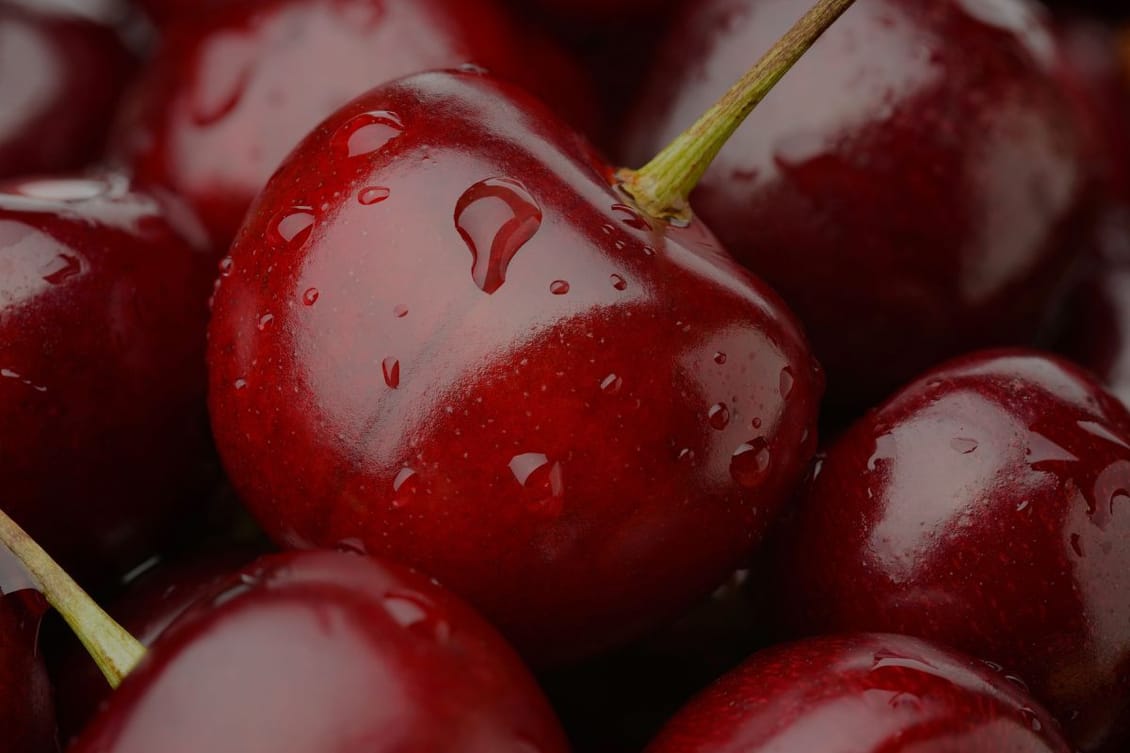
A big welcome to the 21 new foodies who have joined us this week — you’ve got good taste.
If you too have good taste then subscribe to The Sauce — InFlavour's content & insights community, run by global experts. Sink your teeth into stories about food, worth sharing, and receive insights, ideas, opinions, trends, and strategies straight to your inbox.
Keep up with our weekly newsletters on LinkedIn by subscribing here.
Cherries are a cheerful fruit. They brighten up our desserts and stain our fingers with sweet juice, whispering of laid back summer days.
They’re in the names of countless songs (Cherry Bomb, Cherry Pie, Cherry Cherry, Cherry Baby; to name just a few) and the titles of numerous novels (Cherry, The Time of Cherries, and even Cherry: A novel).
But cherries aren’t so cheerful at the moment. Or at least, cherry farmers aren’t. They’re struggling – and innovative growing strategies could be the only route to a viable future.
Human beings have been enjoying sweet cherries for hundreds of centuries – found on the tables of the ancient Greeks, the Romans, the Chinese Noblemen, and more.
They originated in Anatolia, a peninsula in Western Asia, where they were harvested from fertile areas between the Black and Caspian seas. It’s thought they were brought to Europe by birds.
The Greeks were the first to proactively cultivate cherries for food, and other cultures picked up on their practices and did the same.
Cherries didn’t make it to the USA until the 17th century. And large-scale production of the cherries enjoyed worldwide today began in the mid-1800s. Today, the US is the fourth largest cherry growing region; with the first three spots taken by Turkey, Chile, and Russia respectively.

Agriculture Dive reported that many growers had no choice to leave the majority of their fields unharvested as a result of weather events – and losses have mounted over recent years. Cherry crops are geographically limited and they don’t stay fresh in storage for long; making farmers vulnerable to climate change and unpredictable growing conditions.
As a result, cherry growers are facing immense pressures – with their businesses and livelihoods at risk.
In the Pacific Northwest, growers are planting cherry orchards in new locations in the hope that they can mitigate the effects of weather-based losses by covering a larger geographical area.
Jon DeVaney (President of the Washington State Tree Fruit Association) told Agriculture Dive,
“Orchardists have been planting cherries at fairly high altitudes in places that were not traditional tree fruit production areas just to try to extend the season.”
And now, new research is creating the potential to transform the tree fruit industry – by working on a commercially accessible system for precision crop protection.
The Precision Orchard Management for the Environment (POME) project, taking place in the UK, is developing cutting edge technologies to analyse fruit trees in close detail so that inputs can be finely targeted. The project is being led by crop advisory firm Hutchinsons, along with a range of partners in agriculture and academia – and it’s co-funded by Innovate UK, Defra, and a number of commercial partners.
The technologies in development will be extensively tested by the UK’s National Institute of Agricultural Botany (NIAB), before being rolled out for testing on commercial farms. And the trials will assess the improvements precision crop protection offers to the environment as well as the crops in question.
Alongside this, NIAB will develop new AI-powered systems to map tree characteristics from the air, and analytics techniques that can converge data from multiple sources in order to extract meaningful information from large orchard datasets. The purpose of this is to enable faster, more detailed mapping of orchards – so crop protection can be highly targeted.
Ultimately, these technologies will enable fruit tree growers to make more informed decisions about every aspect of crop production; and that could help to minimise losses and protect the industry in the face of increasingly unpredictable environmental conditions.
Everyone loves a sweet cherry pie. And food technology may be critical to the future of our cherry consumption – along with the future of agricultural livelihoods across the industry.
Mark your calendars for our next newsletter on 12 July 2024. Is there anything specific you'd like to see covered? We'd love to hear from you! Click here to share your suggestions.
Until next week,
Aravind Kanniah,
Exhibition Director
If you want to stay ahead of the latest developments in F&B, register now to attend InFlavour 2024. We can’t wait to see you there.
Take your seat at the InFlavour table, a government-backed and world-leading B2B food event by Tahaluf.
E-mail address SubmitWant to keep up to date with all our latest news and information? Enter your name below to be added to our mailing list.
E-mail address Submit